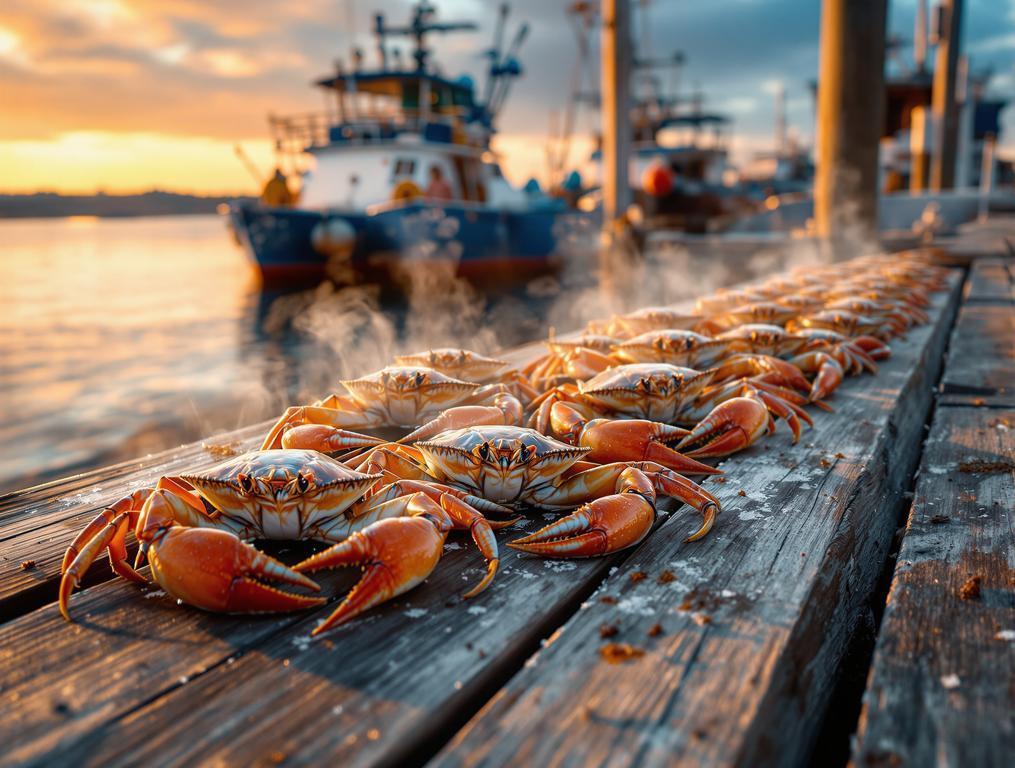The drawbridge swings shut behind me as I cross onto Tilghman Island just after 6 AM. A weathered waterman in white rubber boots nods without smiling, then returns to loading crab pots onto his skiff. I’ve just entered one of America’s last authentic maritime villages, home to 874 residents yet harboring centuries of Chesapeake Bay tradition. Only 2.5 square miles in size and barely 7 feet above sea level, this Maryland outpost sits 90 minutes from Washington DC yet exists in another time entirely.
Chesapeake Bay insiders predict record blue crab harvest for tiny 874-resident island
“It’s looking to be our best haul in 15 years,” Captain Miller tells me, his hands never stopping as he prepares for another day on the water. Tilghman Island’s watermen – the local term for those who make their living from the Chesapeake – are buzzing about 2025’s historic blue crab season.
The timing couldn’t be better for seafood lovers. While nearby St. Michaels fills with tourists shopping for nautical-themed souvenirs, Tilghman’s working harbor at Dogwood Creek hums with genuine maritime activity that hasn’t changed in generations.
Marine biologists confirm what locals already know: perfect winter conditions and improved Bay conservation efforts have created what’s predicted to be the most abundant blue crab population in over a decade. Unlike other seasonal food economies that struggle with consistency, Tilghman’s watermen adapt with generations of knowledge.
Why Tilghman Island preserves America’s most authentic watermen traditions
While only a 20-minute drive separates Tilghman from tourist-favorite St. Michaels, the cultural gap spans centuries. St. Michaels offers boutiques and wine bars; Tilghman offers multi-generational families who still harvest oysters from historic skipjacks – the last commercial sailing fleet in North America.
Unlike towns that preserve buildings, Tilghman preserves a way of life. The island maintains cultural integrity similar to specialized production communities elsewhere, but with distinctly American resilience.
“Folks come here and can’t believe it’s real. No one’s putting on a show. These families have worked these waters since the 1600s, and they’ll be here tomorrow morning whether you visit or not.”
This authenticity manifests everywhere. The Tilghman Watermen’s Museum occupies a historic “W”-shaped house, displaying not just artifacts but the ongoing story of a community. During my visit, three generations of a waterman family arrived to donate their grandfather’s hand-carved decoys – not as history, but as part of living tradition.
“We keep the old ways alive”: How local families maintain maritime heritage
I join Captain Wade aboard his skipjack at 5:30 AM, when the Chesapeake waters turn silver with morning light. His family has harvested oysters for seven generations, adapting to changing regulations while maintaining traditions that define Chesapeake culture.
“We’re not stubborn, we’re consistent,” he laughs, demonstrating techniques for harvesting that have barely changed in centuries. These families maintain a commitment to tradition that rivals even the most preservation-minded communities.
The island’s average resident age of 57.8 years reflects both challenge and opportunity. Young islanders increasingly stay to maintain family businesses, seeing value in what previous generations considered hard labor. The summer’s exceptional crab harvest reinforces that decision.
Your guide to experiencing authentic Chesapeake crab feasts this summer
To experience Tilghman authentically, avoid weekends when day-trippers from DC increase the population. Unlike islands that balance massive tourism, Tilghman maintains a delicate equilibrium between welcoming visitors and preserving identity.
For the quintessential experience, arrive for early breakfast at Tilghman Island Country Store before 7 AM. Watch watermen return with their catch around 2-3 PM at Dogwood Harbor, then enjoy the day’s harvest at Character’s Bridge Restaurant or the waterfront tiki bar.
The best crab feasts happen mid-week in July, when commercial kitchens prioritize freshness over volume. Expect to pay $65-85 for all-you-can-eat blue crabs – twice what you’d have paid five years ago, but with unmatched quality and setting.
As I drive away across the drawbridge, a skipjack glides silently beneath, its sail catching morning light. Sarah would capture this moment perfectly on film; Emma would collect shells along these shores. I’ll bring them next time. For now, I carry away the memory of hands cracking crab shells and stories spanning centuries – the kind of American experience that exists despite tourism, not because of it.
